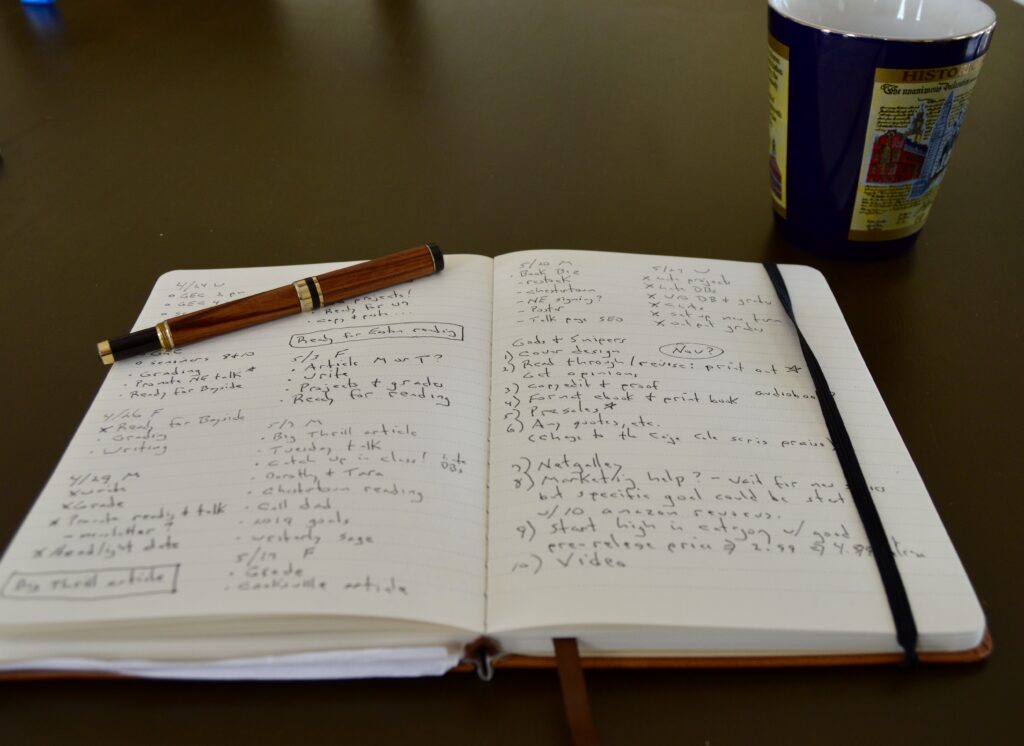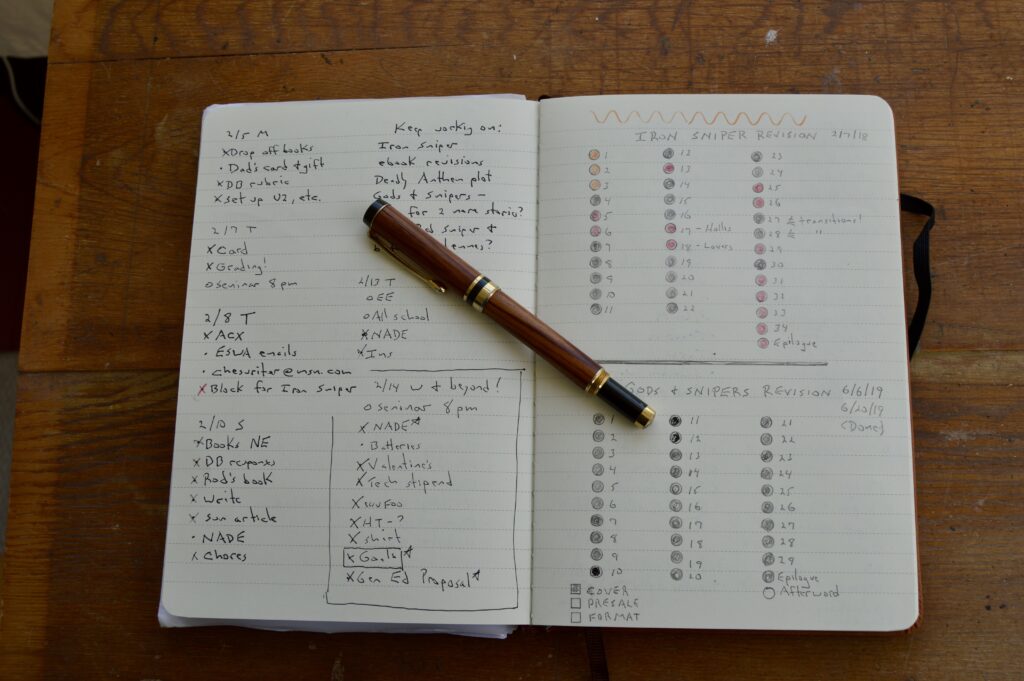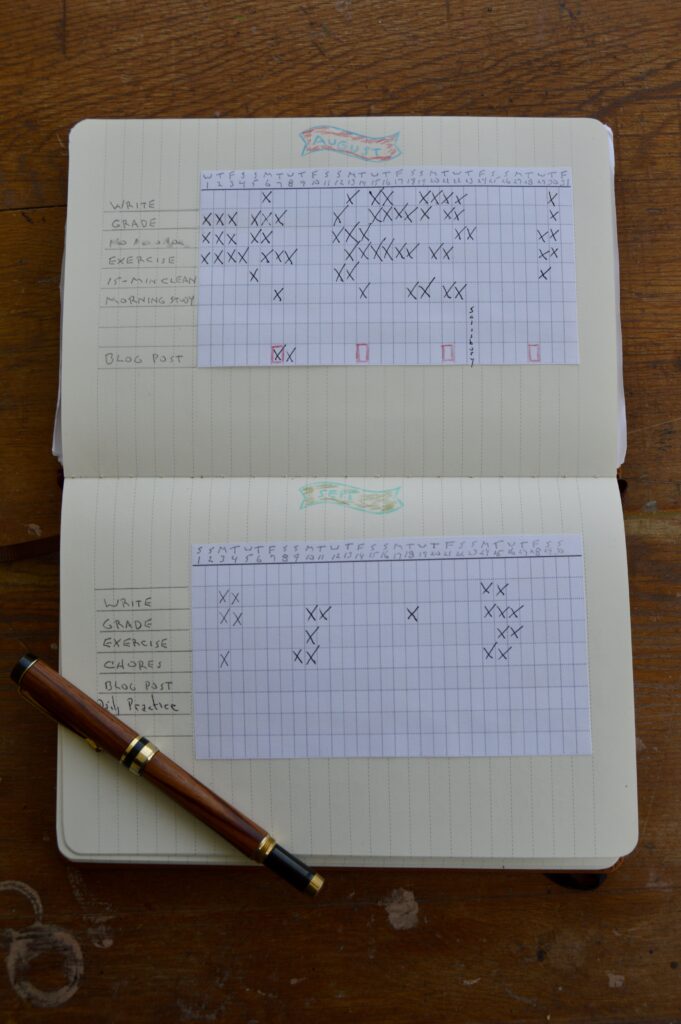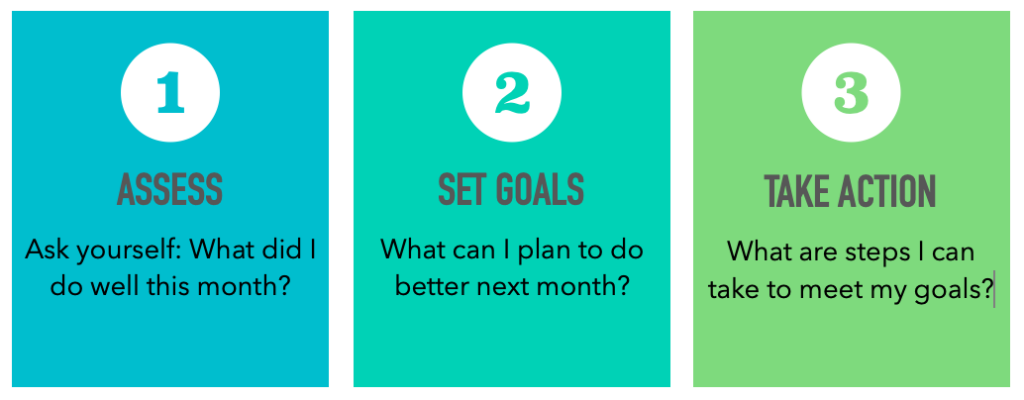Get started with your bullet journal using this notebook from Yop and Tom that uses a grid pattern that's perfect for a freewheeling bullet journal.

Best bullet journals to make your writing creative and organized
Staying organized as a writer isn’t always easy, but our guide to the best bullet journal notebooks for writers can help. Our minds can be a jumble of ideas, deadlines, and events, while our creativity doesn’t always react well to be corralled in the usual way. It’s OK for writers to skip the Google calendar. Instead, a good approach to staying as organized as a writer can be using a bullet journal for writers.
What exactly is a bullet journal? Here’s a hint: it has nothing to do with shooting.
The term “bullets” refers to bullet points that you see in an article. In this journal, you are creating the bullet points for your writing goals and your schedule. The term can also refer to the tiny dots that some bullet journals use instead of lines on the page. But the simple truth is that a bullet journal can take many forms in any variety of notebooks.
Let’s get started creating a bullet journal for writing.
I first learned about bullet journals during a worksop at an online writers’ conference. Although the presenter’s approach was a bit more formalized and included decorative stenciling, I realized that I had already been using journals for years to keep track of writing projects and ideas. I just wasn’t calling these bullet journals. These were my writers notebook.
-
 Buy Now$11.99
Buy Now$11.99We earn a commission if you make a purchase, at no additional cost to you.
05/27/2025 11:46 am GMT -
 Buy Now$13.49
Buy Now$13.49We earn a commission if you make a purchase, at no additional cost to you.
05/27/2025 11:32 am GMT -
 Buy Now$16.99
Buy Now$16.99We earn a commission if you make a purchase, at no additional cost to you.
05/27/2025 11:53 am GMT
Through the years, I have kept them all and they now fill a shelf in my office. These writers notebooks are mostly a particular kind of notebook, the trusty Mead Spiral Notebook. In more recent years, I switched to the Black n’ Red Hardcover Notebook because these are a bit more refined. In either case, the spiral binding may not be aesthetically pleasing to some, but it has a functional purpose, as do the hard covers.
Try Scrivener, the best tool for writers
With their sturdy covers, these notebooks work very well for sitting in an easy chair and writing while sipping coffee, tea, or possibly port wine on a winter’s night. No desk is required because the hard covers provide enough support for writing down your ideas.
Chances are, you will want to keep your bullet journals and refer back to them from time to time. How often do you go back and explore your old hard drive files with fondness?
Let me guess: Pretty much never.
Journals, on the other hand, give you a connection with your ideas and creative state of mind. Flipping through them on a rainy day is like revisiting an old friend. Sometimes, a bullet journal can prompt a forgotten writing idea or rekindle a goal.
Thinking with pen and paper is very left-brained … writers often perceive themselves as being right-brained creatives, but there is also something very analytical about distilling the world around you into words on the page.
The concept of bullet journals is nothing new. For example, Michelangelo kept extensive journals in which is sketched out ideas and explored his thoughts. What was Samuel Pepys diary but an elaborate bullet journal?
Once you start keeping a bullet journal for writers, you will be in good company.
There are lots of approaches to getting started with a bullet journal for writers. The first is deciding what you want from the journal. Here are some good things to include in your bullet journal:
You can create a monthly planner to track upcoming events and goals.
Daily to-do lists.
Weekly tracker for activities such as exercise and word counts.

Monthly or weekly diaries highlighting activities and how well you did in meeting your short-term goals. Where did you do well and where can you do better?
Sections devoted to exploring long-term goals. Where do you see yourself in six months? One year? Five years? Remember that we are looking at our bullet journal for writers, but there is no reason why you can’t include some personal goals here as well, such as that dream trip to the Scottish highlands.
The key to a bullet journal is flexibility. Once you have a framework for how to organize your bullet journal, you can put into it anything that you want. This is just what makes a bullet journal the perfect planning tool for writers.
For example, here is what I have included in my own bullet journal (I’ve kept one now for about three years):
Monthly planner, daily to-do lists, monthly trackers, novel-in-progress trackers (both for the writing and editing phases), sections for the year’s writing goals, self-reflection sections to explore writing and personal goals.
What I have found is that the best time of day to sit down with my journal is in the morning, with a cup of coffee. If you don’t have a creative mindset morning routine, we’ll have to explore that later. What matters is that you don’t jump online to check the news or Facebook. Instead, check in with yourself by writing in your bullet journal. You can take as much time with this as you like, from a couple of minutes on a busy morning to a couple of hours on a more leisurely morning if you really get into exploring some writing ideas.
Check in on your monthly planner. What’s coming up, such as meetings, conferences, or deadlines? Stay organized!
Mark off items in your activity tracker. If you did well, maybe you deserve a second scone this morning. If you could have done better, now is the time to address that in the next step, your daily to-do list.
What are your top to-do items for the day? Don’t overwhelm yourself writing down every little thing. Instead, focus on three or four items that you need to check off today. I list meetings, events, or classes that I need to teach with circles and other items with dots. Once I complete that item, I fill in the circle or put an X through the dot.
Review your monthly goals. How are you doing? At the end of the month, take some time (and some space) to reflect on how you have done.
Finally, work that idea muscle (the caffeine will help). Jot down some ideas for writing projects or marketing. Brainstorm that great new novel idea or explore that character who is stuck in your head. Remember that this is your journal … pick a blank page and get writing.
How do you set up your own bullet journal? Read on to find out …
First of all, starting a bullet journal is a good excuse to buy a really nice notebook or journal—as if you needed an excuse!
For my journal, I chose a Lemome with lush, thick paper. There is a ribbon like in an old hymnal that you can use to mark your place. This journal also has a nice pocket inside the back cover to store notes jotted on scraps of paper and a few stencils for decorating and organizing the journal. More about those later …

My bullet journal has lined pages because I like these best for writing. However, you can choose a journal with blank pages or with a grid of small dots or “bullets” rather than lined pages. If you are going really free form and plan to do a lot of sketching or stenciling in your journal, then the dots or “bullets” may be the way to go.
Don’t sweat the choice too much. You can’t go wrong with any style of journal.
If you prefer, there are several options now for notebooks that are already set up for bullet journaling. These are a great way to get started. However, it’s not at all hard to set up your own journal from scratch, and that’s most of the fun, anyhow.
Let’s get started.
The way that I have set up my bullet journal is to plan for a complete year. The front section of the notebook is where I have the monthly planners and trackers. After that, set aside pages in the middle of the notebook for the daily to-do lists. In the last third of the book, use those pages for writing goals, notes, or exploring ideas.
Here’s how:
We’re going to set up a bullet journal from scratch. First, leave a couple of pages in the front to create your table of contents.
Next, plan on two facing pages for each month, for a total of 24 pages. This will be for your monthly planners. Number 1-15 on one page, then 16-30 (or 31!) on the facing page, leaving the bottom half of the pages blank for notes and goals. Beside each number, write the first letter of the day of the week; i.e. 1 M, 2 T, 3 W … and so on.

This will be your monthly planner for upcoming events. In the top right corner, jot down 3 or 4 key goals for the month that you want to accomplish.
On the bottom half, I like to use one page to sum up key events from the month, sort of like a diary for the sake of posterity. On the second page, reflect on how well you did meeting your goals that month. What are some things to work on in the next month?
In the pages that follow the monthly planner section, this is where you can create your monthly tracker section. Again, you will need one page for each month. I created a grid that I printed out for my tracker, but you can also draw it by hand using a ruler if you are so inclined.
In the second after that, I have my daily to-do lists. Again, it’s best to jot down just three or four items rather than try to list everything. Headline each day with the date and day of the week: 5/8 F. Cross items off as you complete them for a sense of accomplishment.
At any point in this section, you can explore ideas, write about your goals, or even brainstorm your next big project. Don’t worry if it’s a bit jumbled because the whole purpose of a bullet journal is to leave room to explore. If you fill up a page with ideas for your next novel, that’s great! Just skip to the next blank page to continue with your daily to-do list.

Your bullet journal is a great place to record your musings on any number of topics. One favorite activity is to do a three-question Q&A each month:
1. What did I do well this month?
2. What can I do better?
3. What are the actionable steps I can take to achieve my goals?
How writers can use a bullet journal.
Aside from the obvious benefits of organizing your daily and monthly activities, a bullet journal can help writers stay on track with writing projects or even organize new ones.
• Track daily word counts for productivity
• Keep a list of craft books to read (and write a paragraph about what you found valuable)
• Create checklists for current projects, such as a list of completed chapters or revisions
Of course, with the bullet journal, you can be as creative and artistic as you desire. Sketch in the margins, or use a stencil to create fun designs. You can even cut out fetching images from magazines and paste them into your bullet journal with a glue stick. Decorating your journal with flourishes if perfectly acceptable. You can do as much decorating as you like—which can be part of the appeal for many—or take a more minimalist approach.
Basically, anything goes when it comes to journal content.
A bullet journal is all about being able to track events and even ideas in an organized way, while also allowing your thoughts to roam. Have fun and explore while thinking and organizing. Who knows where your journaling will take you. By making sure that you are using a favorite notebook and pen, you will enjoy the journal along the way.
More articles for writers:




